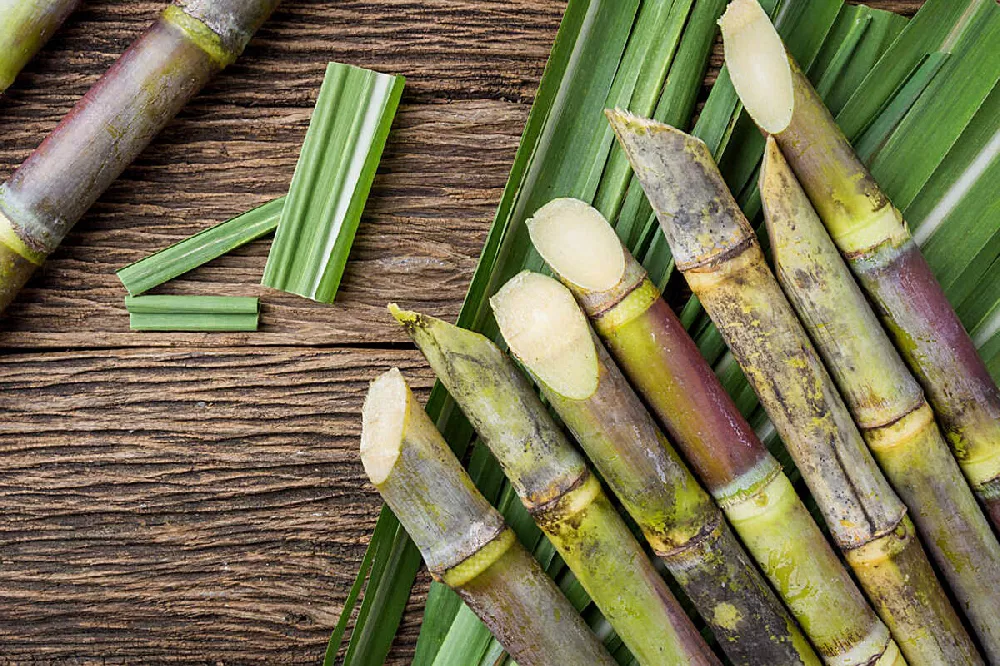A Closer Look at sugar cane products in Cosmetic Applications
A Deep Study Sugar Cane: Insights on Production, Product, and Product Growth
Sugar cane plays a crucial role in agriculture, underpinning economies in exotic regions. Its growing entails intricate procedures affected by different environmental elements. Growers encounter considerable obstacles, consisting of climate change and market changes. Technologies in product development are emerging in action to progressing consumer needs. Recognizing these dynamics is essential for understanding the future of this crucial crop and its influence on worldwide markets. What lies in advance for sugar cane and its myriad applications?
The Relevance of Sugar Cane in Global Agriculture
Sugar cane functions as a crucial plant in international agriculture, underpinning economies and food systems in several tropical regions. This versatile plant is largely cultivated for its high sucrose content, which is refined right into sugar, a standard component in numerous food products. Beyond sweetening, sugar cane is additionally essential for generating biofuels, specifically ethanol, adding to power sustainability.The economic significance of sugar cane encompasses employment, offering livelihoods for countless farmers and workers in processing centers. In a number of countries, sugar cane growing and handling stand for considerable parts of agricultural GDP, affecting trade equilibriums and regional development.Additionally, sugar cane's flexibility to various climates improves its relevance as a crop, making sure regular supply in international markets. Its byproducts, consisting of molasses and bagasse, even more diversify its energy, making it a necessary element in food, power, and sector. Overall, sugar cane continues to be a cornerstone of agricultural performance worldwide.
Farming Processes: From Planting to Harvest
Cultivating sugar cane involves a series of distinct processes that assure suitable development and return. The cultivation begins with land prep work, where the soil is tilled to protect optimum oygenation and water drainage. Following this, seed cane, which includes fully grown stalks, is picked and reduced right into sectors (sugar cane products). These sectors are after that planted in furrows, guaranteeing proper spacing to permit sunshine and nutrient access.Once grown, watering systems are employed to keep adequate wetness levels, as sugar cane flourishes in moist problems. Weeding and insect management are necessary throughout the expanding period to minimize competition for sources. Nutrient application, including fertilizers, sustains durable development. As the plants grow, monitoring for illness and bugs continues.Harvesting normally takes place 10 to 24 months post-planting, depending upon the selection. The canes are cut short, guaranteeing very little waste, and are quickly transported for processing to preserve sugar quality
Geographical Distribution of Sugar Cane Production
The geographic circulation of sugar cane production is mainly shaped by specific climate and dirt needs. Major generating countries, such as Brazil, India, and China, gain from exotic and subtropical environments that sustain the crop's development. Understanding these factors provides insight right into the worldwide landscape of sugar cane growing.
Significant Making Countries
Sugar cane is expanded in different areas worldwide, particular countries control production due to favorable environments and agricultural practices - sugar cane products. Brazil leads the worldwide market, representing around one-third of complete production, many thanks to its considerable haciendas and advanced farming strategies. India adheres to as a significant producer, profiting from both desirable weather and a large residential market. China and Thailand also place among the leading manufacturers, with well-established facilities supporting their sugar sectors. Various other remarkable factors include the USA, Mexico, and Australia, each leveraging their special farming systems to improve browse around this site result. These nations play an important duty in the sugar cane supply chain, affecting international costs and availability
Climate and Soil Needs
Perfect climate and dirt problems are important for successful sugar cane production. Sugar cane prospers in tropical and subtropical regions, requiring warm temperatures between 20 ° C and 30 ° C (68 ° F to 86 ° F) These plants require bountiful sunshine and rainfall, ideally in between 1,500 to 2,500 millimeters each year, to ensure peak growth. The soil must be well-drained, abundant, and abundant in raw material, with a pH level ideally between 5.5 and 8.5. Sandy loam or clay loam soils are particularly conducive to sugar cane growing, offering necessary nutrients and drainage. Geographical circulation is mainly affected by these elements, with significant production locations located in Brazil, India, and China, where environmental problems align with the plant's needs for development and return.

Challenges Dealt With by Sugar Cane Growers
Sugar cane cultivators come across considerable obstacles that affect their livelihoods. Climate modification introduces unpredictable climate patterns, impacting crop yield and quality. Furthermore, market value volatility creates financial uncertainty, complicating lasting planning for these farming producers.
Climate Adjustment Impacts

How do environment modification effects influence the stability of sugar cane growing? Climbing temperatures and erratic weather condition patterns notably test sugar cane cultivators. Enhanced warm can bring about reduced returns, as the plants struggle to thrive in severe problems. Furthermore, transformed rainfall patterns cause either droughts or too much flooding, both destructive to crop wellness. Pests and illness are most likely to multiply in warmer climates, additionally harmful production. In addition, soil degradation and salinization because of increasing sea degrees can reduce cultivatable land. These weather adjustments compel cultivators to adjust their methods, frequently needing investment in new modern technologies and resistant plant ranges. Eventually, the sustainability of sugar cane growing hinges on resolving these environment tests successfully.

Market Value Volatility
Market price volatility offers considerable obstacles for sugar cane cultivators, impacting their financial security and planning. Changes in market value, driven by factors such as global supply and demand, climate conditions, and government plans, create uncertainty for manufacturers. This unpredictability makes it hard for cultivators to forecast profits and take care of operating budget effectively. Furthermore, when prices go down all of a sudden, lots of farmers may battle to cover production prices, leading to potential monetary distress. To alleviate these threats, some growers transform to agreements or hedging approaches, yet these remedies may not come to all. Market rate volatility stays a consistent worry, affecting the general sustainability and success of sugar cane farming.
Recognizing the Sugar Cane Supply Chain

Market Trends Influencing Sugar Cane Costs
The dynamics of sugar cane prices are affected by a selection of market fads that show wider economic problems and consumer behaviors. Global need for sugar and sugar-related products plays an essential function, with raising rate of interest in natural and sustainably sourced products driving costs higher. Additionally, fluctuations in oil prices influence the price of production and transportation, more affecting market prices. Weather patterns are an additional significant aspect; adverse problems can cause reduced yields and raised prices. Trade plans, tolls, and worldwide contracts likewise form the marketplace landscape, impacting supply chains and accessibility. Money exchange prices can make complex global trade, influencing rates for both exporters and importers. Changes in customer preferences toward much healthier choices may change demand patterns, producing a ripple effect on sugar cane prices. sugar cane products. Recognizing these interconnected trends is important for stakeholders in the sugar industry.
Technologies in Sugar Cane Product Growth
Various technologies in sugar cane product resource advancement are reshaping the market and expanding its applications. Scientists are checking out alternate usages past typical sugar, consisting of biofuels, eco-friendly plastics, and wellness supplements. Advancements in chemical handling techniques have actually enhanced the removal of useful substances such as antioxidants and vitamins from sugar cane, promoting its use in practical foods.Additionally, the advancement of genetically customized sugar cane varieties aims to improve yield and resistance to insects, while also enhancing the dietary account of the crop. Innovations in fermentation processes have resulted in the production of premium liquors originated from sugar cane, interesting a growing market for craft spirits.Moreover, sustainable techniques in farming and handling are obtaining traction, with an emphasis on lowering ecological impacts. These improvements not only produce new market chances yet likewise cultivate an even more lasting technique to sugar cane production, aligning with global patterns in the direction of green items.
Often Asked Concerns
What Are the Ecological Effects of Sugar Cane Farming?
The environmental impacts of sugar cane farming include logging, loss of biodiversity, water pollution from fertilizers and pesticides, dirt destruction, and greenhouse gas exhausts, every one of which significantly add to ecological discrepancies and climate adjustment.
Just How Does Sugar Cane Farming Affect Resident Economies?
Sugar cane growing substantially affects regional economies by producing jobs, boosting agricultural markets, and producing income for farmers. It can additionally lead to financial reliance and changes based on market needs and ecological problems.
What Are the Key Pests and Diseases Affecting Sugar Cane?
The primary pests affecting sugar cane include the sugarcane borer and aphids. Diseases such as red rot and smut considerably effect return. Farmers have to implement incorporated bug monitoring techniques to mitigate these risks effectively.
Exactly How Is Sugar Cane Processed Into Different Products?
Sugar cane handling involves crushing the stalks to remove juice, followed by clarification, dissipation, and formation. This procedure yields raw sugar, molasses, and ethanol, each offering distinct purposes in different sectors, from food to energy.
What Are the Nutritional Aspects of Sugar Cane?
The dietary elements of sugar cane consist of vital minerals and vitamins, specifically B vitamins, calcium, and iron. It likewise has fiber, though mainly made up of sucrose, which supplies energy however lacks considerable nutrients.